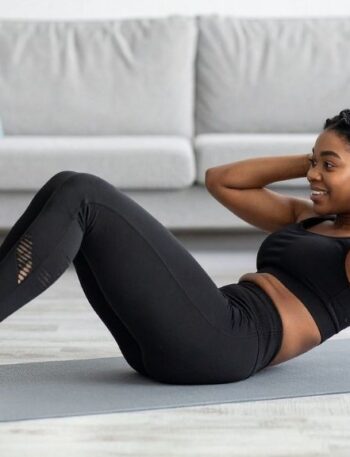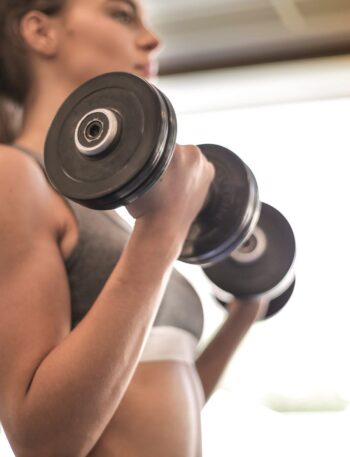Stack Movement with Strength for a More Effective Routine
Walking is one of the most underrated forms of movement—for both your body and your mind. Lately, I’ve been loving early summer morning walks. They’re such a boost for my mood and energy!
But what if you could take that walk up a notch—turning it into a full-body workout without adding extra time or needing a gym?
That’s exactly where Walk + Workout Combos come in.
Why It’s Trending: Add More Strength to Your Stride
Walking is having a major moment—and for good reason. It’s accessible, low-impact, and effective for heart health, mental clarity, and overall well-being. But people are starting to stack their walks with bodyweight strength moves or resistance (like a weight vest) to boost results without overcomplicating their routine.
Adding a little strength to your stroll helps:
- Build muscle and tone your body
- Improve balance and bone density
- Improve metabolic effect
- Keep your workouts interesting and effective

Muscles Used When Walking
Walking uses many muscles throughout the body, especially in the legs, hips, and core, making it a powerful full-body movement.
- Quadriceps – front of the thighs, used to straighten the knee as you step.
- Hamstrings – back of the thighs, help bend your knee and propel you forward.
- Glutes (Gluteus Maximus) – your butt muscles, activated during push-off and uphill walking.
- Calves (Gastrocnemius and Soleus) – help push your foot off the ground.
- Hip Flexors – help lift your knee during each step.
- Tibialis Anterior – front of the shin, helps lift your toes as you step.
Core
- Abdominals & Obliques – stabilize your spine and pelvis, especially when walking briskly or uphill.
- Lower Back (Erector Spinae) – supports upright posture.
Common Muscle Groups Not Fully Engaged During Walking
- Chest & Triceps – Light use unless you add push-ups, dips, or walking poles.
- Lats & Biceps – Not engaged much unless using resistance or active arm movements.
- Inner Thighs & Outer Glutes – Stabilizers, but not fully worked unless walking laterally or on uneven ground.
- Deep Core – Helps posture, but not deeply activated like in planks or rotations.
3 Strength Moves to Add to Your Walk
Adding a few simple movements like plank shoulder taps, walking forward and reverse lunges, and bodyweight squats can help strengthen the muscle groups that aren’t heavily used during walking. While walking primarily targets the lower legs and glutes, these extra moves activate your upper body, core, and underused stabilizers like the chest, shoulders, triceps, inner thighs, and deep core muscles. Incorporating these exercises into or after your walk creates a more well-rounded routine that boosts strength, improves posture, and helps prevent common walking-related injuries.
These moves can be done at a park bench, sidewalk curb, or even in your driveway. Do 2–3 sets of 10–12 reps at intervals during your walk or at the halfway point.
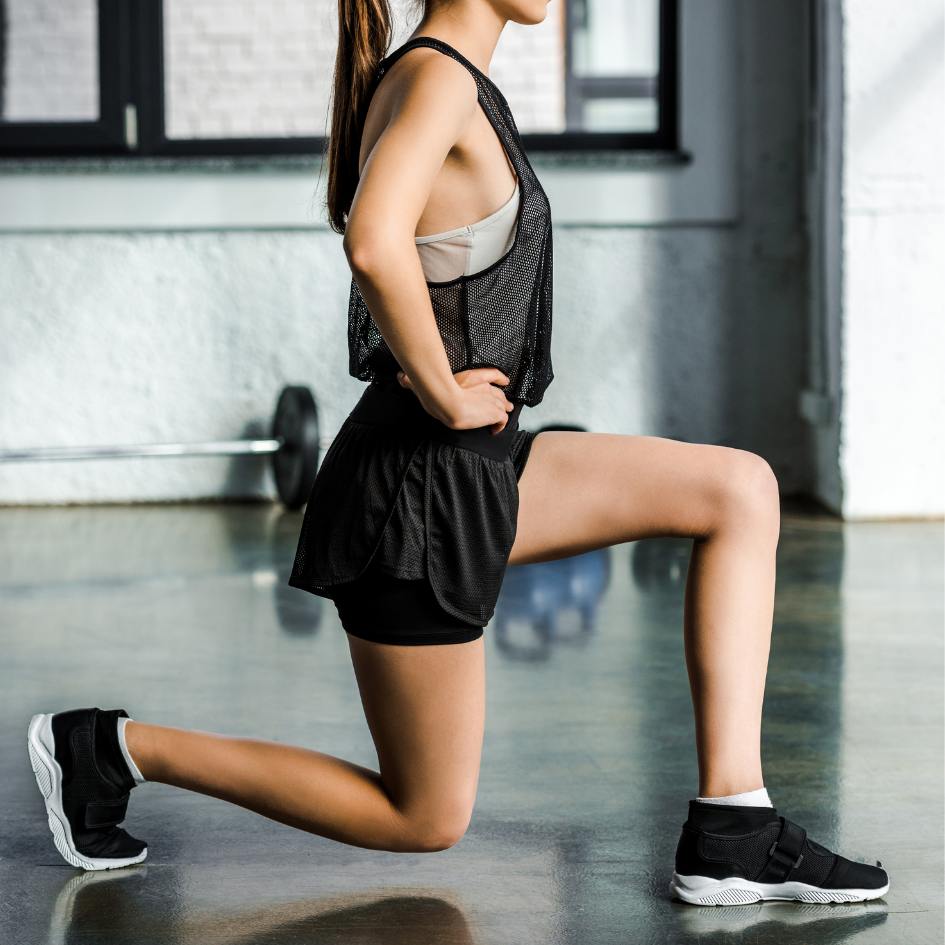
1. Walking Lunges (+Reverse)
Lunges help build strong glutes, quads, and hamstrings.
Take 10 alternating forward lunges that bring the knee close to the ground and add 10 alternating reverse backward lunges.
- Option: Add a weight vest or hand weights for extra resistance.
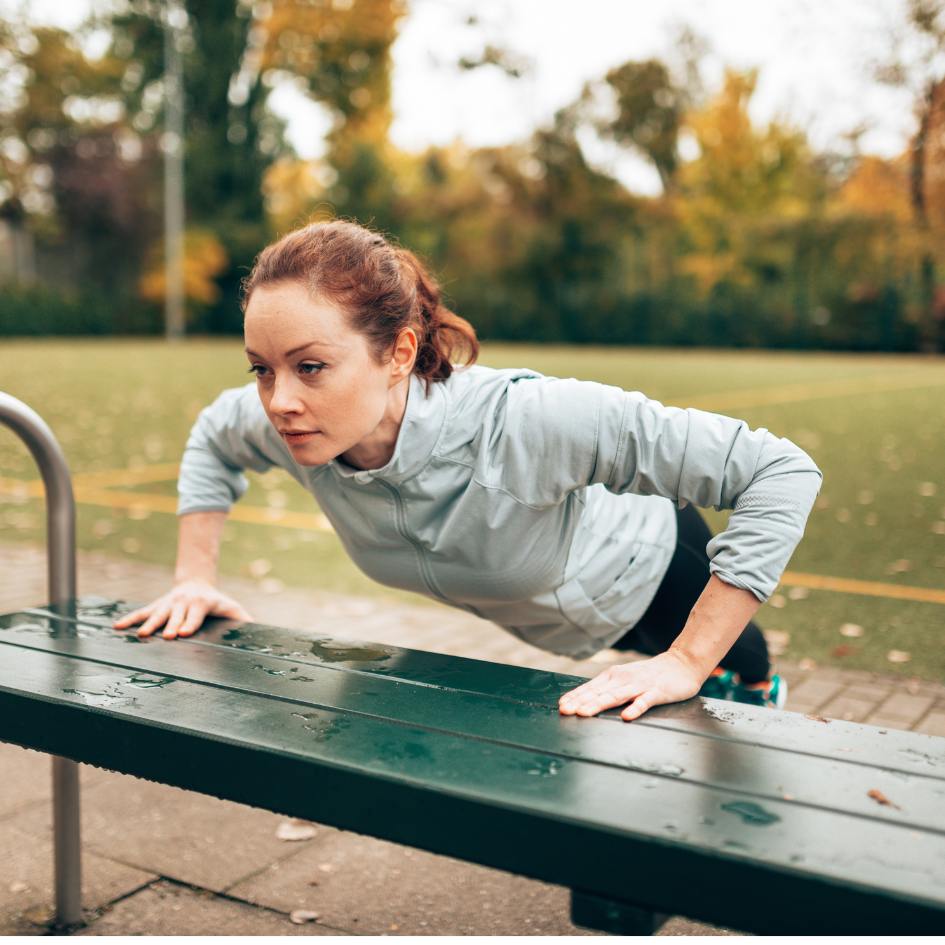
2. Push-Ups on a Bench or Wall or Plank Shoulder Taps
Upper body strength is essential for posture and core control.
- Modify by using a bench, wall, or incline to match your fitness level.
- If you do not have a bench or do not enjoy push-ups, try:
- Plank Shoulder Taps
- From a high plank, tap your opposite shoulder with each hand while keeping hips steady.
- Works shoulders, core, and triceps.
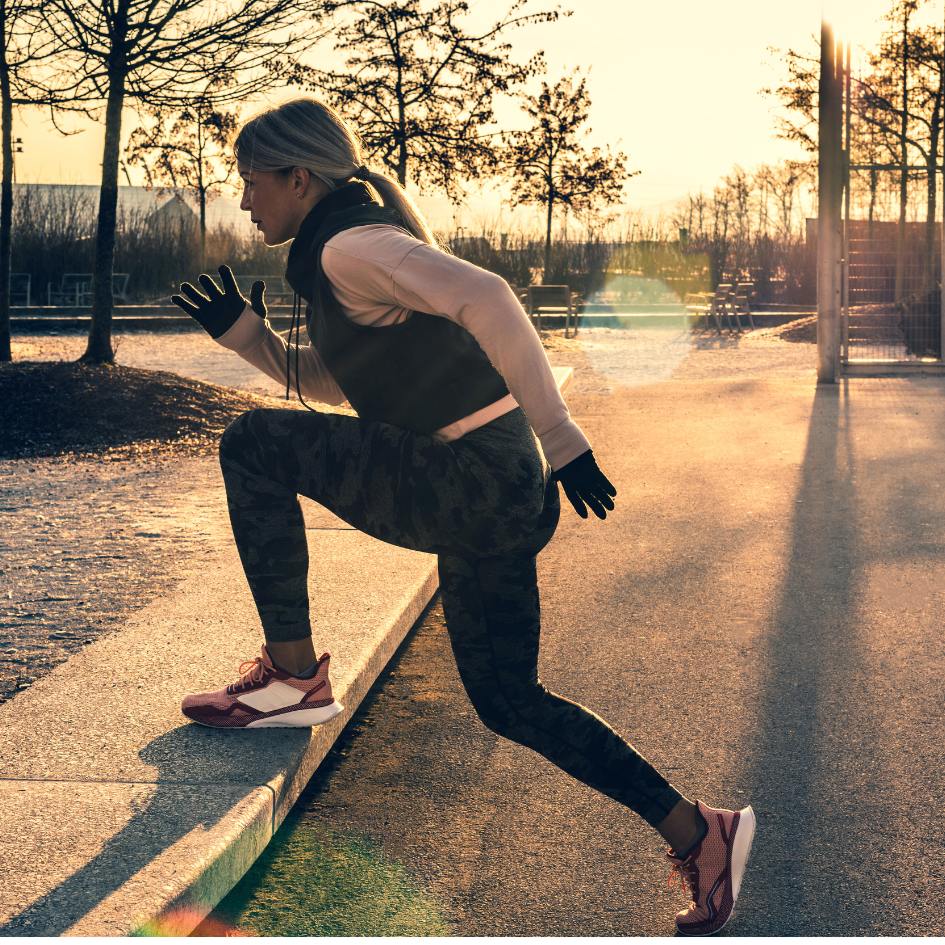
3. Bodyweight Squats or Step-Ups
Great for legs and core. If there’s a low ledge or park bench, use it for step-ups.
Bonus Tip: Wear a Weight Vest
Adding a lightweight vest (start with 5–10 lbs) increases resistance safely and helps build strength while keeping your hands free.
Using a weight vest can enhance the effectiveness of strength training moves done after a walk by adding resistance, helping to build muscle, improve endurance, and increase overall calorie burn—without needing extra equipment.
Final Thoughts
Walk + Workout Combos are a smart, simple way to upgrade your daily movement. They’re efficient, effective, and adaptable to your fitness level. You don’t need a fancy plan or a full gym session—just step outside and add a little strength to your stride.
Ready to level up your walks? Start with these three moves and feel the difference.
👉 Check out more ways to stack your workouts, plus simple tips for sustainable fitness on the Daily Dietitian Podcast! 🎧
Let me know if you’d like a short reel script or Instagram caption to pair with this post!



